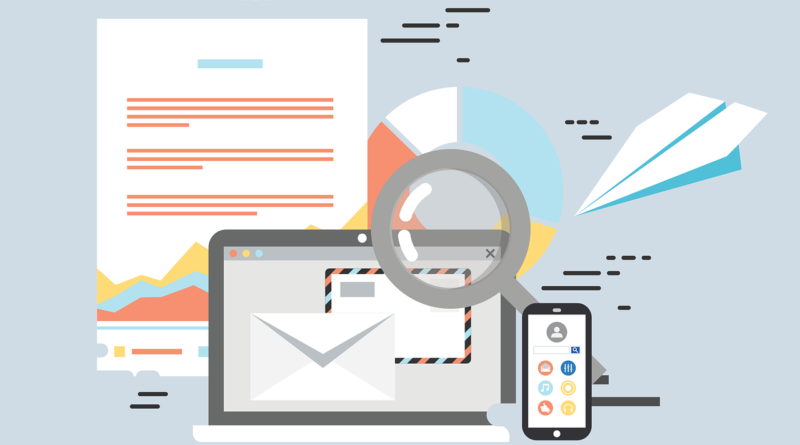How to build an email marketing strategy for your startup from scratch?
Starting your own business is a challenging and rewarding experience, but it’s also one that comes with a lot of responsibility. One of the most important aspects of running a successful startup is marketing, and email marketing is a key part of any good marketing strategy.
An email marketing strategy will help you to reach your target audience, build relationships with customers and prospects, and ultimately boost your bottom line.
But where do you start? In this article, we’ll give you some top tips for building an email marketing strategy for your startup from scratch.
- What is email marketing?
Before we dive into how to build an email marketing strategy, let’s take a step back and look at what email marketing actually is.
Email marketing is the process of sending targeted, personalized emails to a group of people with the aim of promoting a product, service, or brand.
It can be used to achieve a variety of objectives, such as growing your customer base, increasing brand awareness, or driving website traffic.
- Why is email marketing important for startups?
Email marketing is especially important for startups for a number of reasons. Firstly, it’s an extremely cost-effective way to reach your target market.
Secondly, it allows you to build relationships with customers and prospects over time.
Finally, it gives you the ability to track and measure your results, so you can fine-tune your strategy as you go.
- Building an email marketing strategy
Now that we’ve covered what email marketing is and why it’s important for startups, let’s take a look at how to build a proper marketing strategy from scratch.
[Source: Pixabay]
- Define your goals
The first step in any good email marketing strategy is to define your goals. What do you want to achieve with your email marketing campaign? Do you want to increase website traffic, boost sales, or raise brand awareness?
Once you know what you want to achieve, you can start formulating your strategy.
Make sure to set objectives as well. Objectives are specific, measurable, attainable, relevant, and time-bound goals that will help you to track your progress.
For example, if your goal is to increase website traffic, a good objective could be to increase website traffic by 10% within the next month.
- Identify your target audience
The next step is to define your target audience. Who are you trying to reach? What are their needs and wants? What are their pain points?
The more you know about your target audience, the better you can tailor your marketing campaign to meet their needs.
Marketing research, surveys, and interviews are just some of the ways in which you can determine your target audience.
Include your current customers, competitors’ customers, and people who might benefit from what you have to offer in this research.
Pay attention to factors such as age, gender, parental or marital status, occupation, location, and education when determining your target audience.
- Choose the right tools
Once you know who you’re targeting and what you want to achieve, it’s time to choose the right email marketing platform. There are plenty of different platforms to choose from, each with its own set of features and benefits.
Some of the most popular platforms include MailChimp, Constant Contact, and AWeber.
It’s important to choose a platform that offers all of the features you need to create a successful email marketing campaign. For example, if you want to send automated emails, make sure the platform you choose offers this functionality.
- Develop the email list
Your email list is the group of people you will be sending your online mail to. It’s important to develop your email list from scratch rather than buying a list of email addresses, as this can lead to deliverability and legal issues.
You can build such a list in various ways. For instance, you could develop a sign-up form on your website or offer a freebie in exchange for an email address.
- Segment the subscriber list
Once you have a few hundred email addresses, you can start segmenting your list into different groups. Segmentation is the process of dividing your list into smaller groups based on common characteristics.
For example, you could segment your list by demographics (age, gender, location), interests (sports fans, music lovers), or behavior (customers, prospects).
This is important because it allows you to send more targeted and relevant messages to each group. As a result, you’ll see higher engagement rates and conversions.
[Source: Pixabay]
- Work on the design
The design of your email should be clean, simple, and easy to read. Avoid using too many images or colors, as this can make the email look cluttered.
Stick to a single-column layout and use large font sizes for easy readability. You should also use plenty of whitespaces to break up the text.
Make sure your call-to-action (CTA) is clear and visible. Your CTA should be in a prominent position, such as above the fold or at the end of the message.
It should also be large enough to catch people’s attention. Use actionable language such as “Buy now” or “Sign up today” to encourage people to take action.
You can always partner with a branding agency in Philadelphia to work on creating the perfect design together.
- Create engaging content
Now it’s time to start creating your content. Your content should be valuable, relevant, and engaging. It should also be brief and to the point.
No one wants to read a long email, so keep your messages short and sweet.
To create compelling content, start by brainstorming ideas. What topics would your target audience be interested in? What problems can you help them to solve?
Ensure that the content is brief, write inviting headlines, use images and videos, and personalize the emails to your audience.
- Consider the context
When creating your content, it’s also important to consider the context of each email. In other words, what is the purpose of each message?
Are you trying to increase website traffic, boost sales, or promote a new product? Once you know the purpose of each email, you can ensure that your content is aligned with this goal.
You should also look at it from the SWOT perspective. You need to consider the Strengths, Weaknesses, Opportunities, and Threats of your business before finalizing this goal.
Some other factors to consider include your budget, resources, and timeline.
- Optimize the subject line
Your subject line is one of the most important elements of your email. It’s what will determine whether or not someone opens your mail.
Make sure your subject lines are clear, concise, and to the point. Avoid using misleading or clickbait-y subject lines, as this will only lead to people unsubscribing from your list.
Your sender’s name is also important. People are more likely to open an email if they recognize the sender.
If you’re sending emails on behalf of a company, use the company name as the sender’s name. If you’re sending them from your personal account, use your full name.
- Stick to the topic
When writing your email, make sure you stick to the topic. Avoid going off on tangents or including irrelevant information.
People have short attention spans, so it’s important to get to the point quickly. Otherwise, you risk losing people’s interest and having them unsubscribe from your list.
- Personalize the content
One of the best ways to engage your audience is to personalize your content. This means addressing them by name, using their city or state, or mentioning their company.
You can also use data from previous interactions to further personalize your content. For example, if someone didn’t open your last email, you could mention this in your follow-up email.
This helps to create a more intimate connection with your readers and make them feel like you’re speaking directly to them. As a result, they’ll be more likely to engage with your content and take action.
- Focus on tone and timing
The tone of your email is just as important as the content itself. You need to make sure that your message sounds friendly and approachable.
Avoid using formal language or sounding too sales-y. Instead, focus on creating a conversation with your readers.
It’s also important to pay attention to timing. Depending on your industry, there may be certain times of the year when people are more likely to engage with your content.
For example, if you sell winter clothes, you might want to send out emails in October or November. This way, people will see your message when they’re actually looking for new winter clothes.
You can also use timeliness to create a sense of urgency. For example, if you’re running a sale, you might want to send out an email the day before it ends. This will encourage people to take action before it’s too late.
- Conclusion
Email marketing is still as relevant as it ever was. It has a unique potential to strengthen every business relationship and promote any business. It is particularly important for startup companies as they can benefit largely from this marketing strategy without investing too much.
Author bio
Travis Dillard is a business consultant and an organizational psychologist based in Arlington, Texas. Passionate about marketing, social networks, and business in general. In his spare time, he writes a lot about new business strategies and digital marketing for DigitalStrategyOne.




